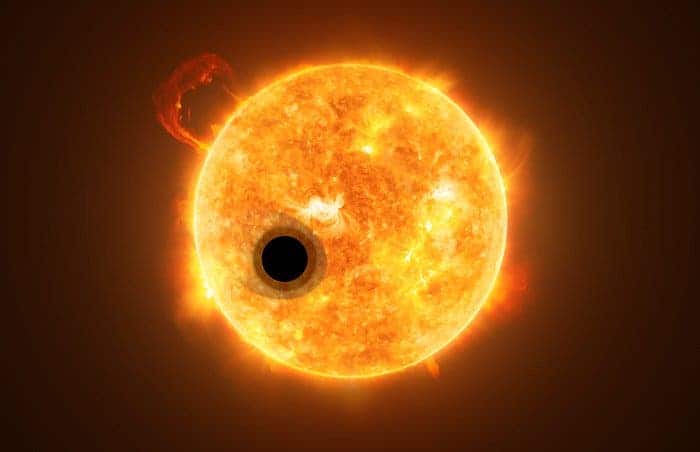
Helium is the second most abundant element in the universe, after hydrogen. For this reason, scientists have always presumed it would be one of the first elements they’d be able to detect in large exoplanets — alien worlds that orbit stars outside the Solar System. Using space telescopes like Kepler, scientists have confirmed thousands of exoplanets but none seem to have contained helium — until now.
Astronomers using the Hubble Space Telescope reported detecting the ubiquitous element on WASP-107b, a Jupiter-sized exoplanet located 200 light-years away from Earth. Despite its huge size, the exoplanet has an abnormally low density, having only 12% of Jupiter’s mass.
The international team of researchers was actually on the lookout for methane but the infrared light readings showed that the atmosphere of WASP-107b turns out to be filled with helium. What’s more, the astronomers were able to tell that the planet’s upper atmosphere extends for tens of thousands of miles into space due to the weak gravitational pull. For the same reason, the planet’s atmosphere is slowly eroding as gas escapes into space.
Perhaps helium is truly abundant in the atmosphere of exoplanets, particularly the large ones, as scientists have always presumed. Until now, the method of choice for detecting atmospheric gases relied on ultraviolet and optical wavelengths, which have their limitations. The new study shows that infrared detection methods are effective and worth pursuing more.
“The strong signal from helium we measured demonstrates a new technique to study upper layers of exoplanet atmospheres in a wider range of planets,” Jessica Spake, lead author of the study from the University of Exeter in the U.K, said in a statement.
“Current methods, which use ultraviolet light, are limited to the closest exoplanets. We know there is helium in the Earth’s upper atmosphere and this new technique may help us to detect atmospheres around Earth-sized exoplanets—which is very difficult with current technology.”
The findings were reported in the journal Nature.
Was this helpful?



